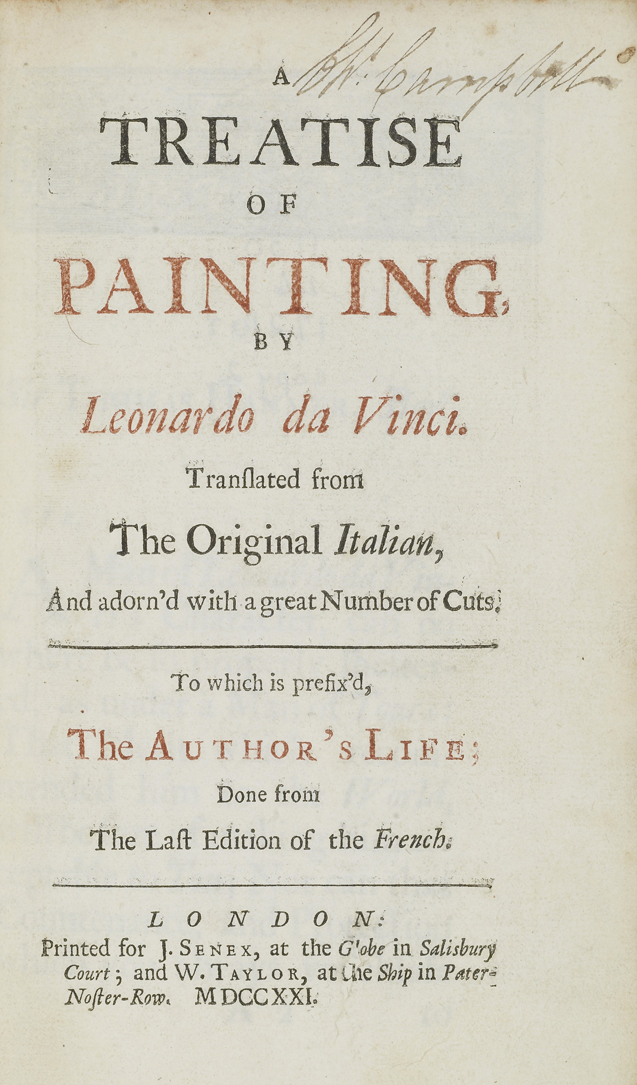
A Treatise on Painting, by Leonardo da Vinci
1721
Senex and Taylor, London
Chapter Display  |
|
Azure, and Green are not simple Colours in themselves, the former being composed of Light and Darkness, that is, of a perfect Black and a perfect White, as we have already observed of the Azure of the Air; and the latter, of one simple Colour, and one Compound, to wit, Azure and Yellow, which together, form a Green.
An Image exhibited in a Mirrour does always participate of the Colour thereof, and the Mirrour is reciprocally tinged with the Colour of the Image it exhibits; these do still borrow more, the one of the other, as the Colour of the Object is stronger than that of the Mirrour; and the Image will ever appear more vivid, and perfect in its Colour, as that is nearer and more akin to the Colour of the Mirrour.
Among the Colours of Bodies, that which is of the brightest White, will be seen at the greatest distance; of consequence therefore, that will disappear at the smallest distance, which is the most obscure.
Among Bodies of equal Whiteness, and equally distant from the Eye, that will appear to be the whitest, which is incompassed with the greatest Obscurity: And, on the contrary, that Obscurity will be seen the darkest, which bounds on the brightest White.
Of Colours equally excellent, that will appear the most perfect, which is seen nearest its direct contrary: thus, a pale Colour, near a Red one, Black, near White, (tho' neither the one, nor the other, properly a Colour,) Gold, near Azure; and Green, near Red, appear with Advantage; it being a natural Property of all Colours, to show themselves more, near their Opposites, than near those alike to them.
A White Object seen in a dark, thick Air, will appear larger than it is in reality; the Reason has been already assign'd, where a black Figure was shown to inlarge it self, on a bright Ground.
The Medium between the Eye and the Object, disguises the latter with its own Colour; Thus Mountains, at a great Distance, are seen coloured with Azure; thus a Red Glass, tinges every thing seen through it, with Red; And thus the Light around the Stars is altered and obscured, by the darkness of the Night.
The Genuine Colour of any Body, appears in that part, which neither receives any Shadow, nor any bright Light.
When a bright Colour terminates upon an Obscure one, the Extremities of the former will by that means become brighter, and more vivid; and those of the latter deeper and more obscure.